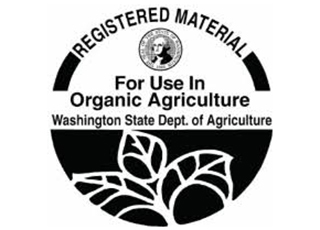Nemasys® C Beneficial Nematodes
Nemasys C provides advanced biocontrol of the mature and overwinter larvae of the codling moth (Cydia pomonella) and oriental fruit moth (Grapholita molesta).
The codling moth life cycle is synchronized over winter by the presence of fifth instar larvae. These larvae are in cocoons in the tree trunks and in the soil. This larval stage is very susceptible to nematode attack. Extensive global trials have proven that applications of Nemasys C can reduce the codling moth population before the first flights, thus providing long lasting control.
In addition, Nemasys C works in harmony with other control methods that require a low initial pest population (e.g. mating disruption or granulovirus (CpGV)). Nemasys C is also an effective tool on a variety of lepidoptera, borers and root-dwelling weevils in outdoor crops including peachtree borer, cranberry girdler, black vine weevil, navel orangeworm and strawberry root weevil.
Beneficial nematodes are microscopic worms that attack and kill targeted insects, without affecting any other organisms. Within the infected insect, the beneficial nematodes reproduce and then release to seek out new pest hosts to infect.
Benefits of Nemasys® C Beneficial Nematodes
- High levels of control of mature and overwinter larvae of codling moths
- A true biocontrol agent, effects will begin between 24 to 48 hours
- No pest resistance issues
- No pre-harvest interval
- No re-entry interval
- Use as part of a integrated management program
See our product tech sheet for suggested application rates.
Package sizes include trays of 3 billion nematodes.
Always read and follow label directions.
Nemasys® beneficial nematodes are registered material for use in organic agriculture by the Washington State Department of Agriculture
Tips and Best Practices
This series of four videos on proper handling and application of Nemasys® beneficial nematodes is expertly presented by Jen Browning, Technical Service Representative at BASF. You’ll see Jen’s hands-on demonstration of biologicial controls in a greenhouse environment and learn valuable tips that you can integrate into your own operation.
Nemasys® Beneficial Nematodes: Receiving, Storing and Checking the Viability
What should viable and live nematodes look like? What’s the proper way to refrigerate and transfer them? Watch a hands-on demonstration that covers the fundamentals and takes the guess work out of handling nematodes.
Nemasys® Beneficial Nematodes: Soil Application
Get the best result with your soil application by following these tips for ideal time, temperature, application equipment, proper settings and other valuable application tips.
Nemasys® Beneficial Nematodes: Foliar Application for Western Flower Thrips
What are the specific application tips for controlling Western Flower Thrips? Watch this demonstration of practices you can incorporate in your greenhouse.
Nemasys® Beneficial Nematodes: Best Management Practices
Are my biologicals working? Listen to Jen Browning’s answer to that and other frequently asked questions, including best practices for tank mix compatibility and building biological controls into your integrated pest management program.


